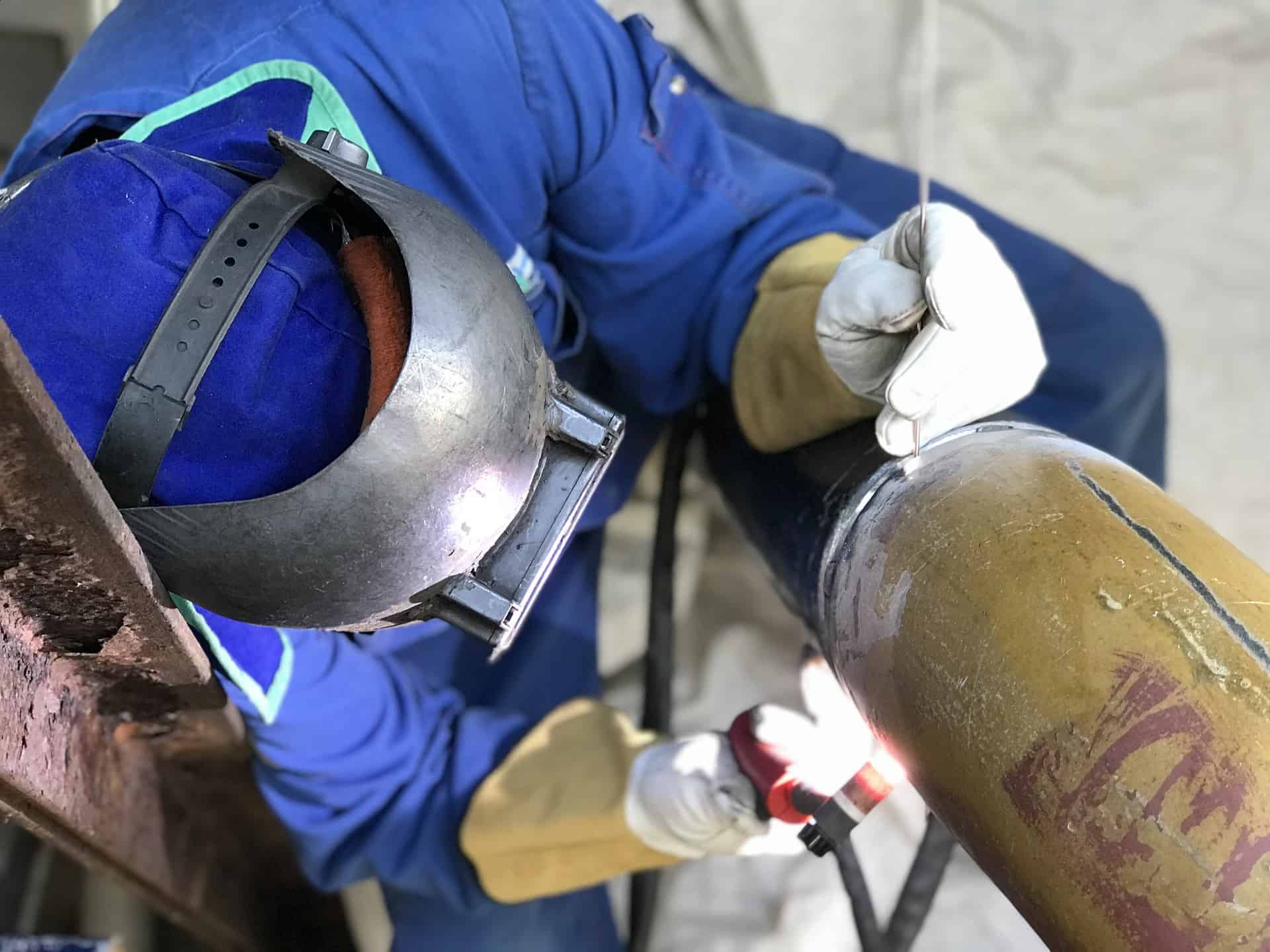First things first: a description of flame-resistant clothes. It would be reasonable to think that flame-resistant clothing is completely fireproof simply because of the term. Does that hold water?
The phrase "flame-resistant clothing," or "FR clothing" for short, is used to describe garments that are constructed with the express purpose of shielding their users from the potentially harmful effects of direct contact with flames or high temperatures.
What this implies is that the garment will not easily catch fire, and if it does catch fire, it will not keep burning once the ignition source is removed because to its flame-resistant qualities. Despite its name, flame-resistant clothing may and will catch fire if exposed to open flame from a flash fire, arc flash, combustible dust explosion, or any other fire source. Keep in mind that FR apparel is NOT fireproof. The "magic" of FR occurs after the flame source has been turned off. When it comes to burn injuries, flame-resistant clothing makes little difference.
We may further dissect this concept by examining the mechanisms through which flame-resistant apparel shields its user from harm. These garments are flame-resistant and self-extinguish in the event of accidental ignition. Short-term exposure to an intermittent flame will not cause this garment to catch fire; rather, it will self-extinguish. This capability significantly reduces the wearer's risk of burn damage and, in many cases, buys the user critical time to flee a potentially dangerous situation.
If the wearer is caught in a flash fire, an electric arc, or any other sudden, potentially dangerous thermal situation, these features will work together to greatly increase the user's chances of evading harm and making it out alive. Wearing clothes that can withstand fire might be the difference between serious burns and a miraculous escape. Check out Australian General Engineering
Table of Contents
FAQs About Metal
Flame-resistant clothing is specially designed so that it's less likely to catch fire when exposed to combustion and high temperatures. In cases where the fabric does ignite, it won't continue to burn once the heat source is removed. This gives the wearer valuable escape time and helps to minimize injuries.
Kevlar, Nomex, and similar synthetic materials are the most fire-resistant fabrics available today. For everyday clothing, synthetics like polyester and nylon resist burning. Natural materials like wool and silk also offer high fire resistance.
Most FR garments loses its effectiveness after 25-50 wash cycles. When you buy used gear, you don't know how well the person washed them, used them, and how many more wash cycles it can take.
Washing Flame Resistant Clothing. You can wash your FR clothing in a regular home washing machine or industrial washing machine, and you can have FR clothes dry cleaned. It is also possible to remove stains from dirt and flammable materials like oils and grease from these clothes.
Cotton-nylon blends will generally remain flame-resistant for anywhere from 18 months to 30 months if they are washed and worn once a week. The most long-term FR fabric solution for uniforms is a synthetic blend, which can last from 24 months to four years, depending on how it is cared for.
What Should I Wear Under My Flame-Resistant Clothing?
Is there anything you can do to increase the effectiveness of flame-resistant clothing, given that it is meant to protect you from flames, heat, and similar environmental concerns? Is there anything else you can tell me that would affect the effectiveness of this clothing?
What you wear beneath your flame-resistant clothes has a major influence on both your safety and the efficacy of the FR garments themselves. Wearing these items requires special care to ensure that you are not melting anything below them.
You should proceed with care for two main reasons. The first is that you are effectively double your FR safety with this measure. Having a backup layer of outerwear means you're still protected in the event your primary layer is destroyed or burnt. The air cushion between the two layers provides additional protection.
Intense working conditions are another case for wearing bottoms that won't melt in the heat. Even though your upper layer keeps the heat out, your underlayer could still melt or become too hot if the temperature is high enough. These undergarments may catch fire and inflict significant burns if the temperature or humidity is high enough.

What Are the Benefits of Flame-Resistant Clothing?
Benefits of both flame-resistant and flame-retardant garments are readily apparent. Workers are able to do their duties in high-risk environments with far less chance of harm because to these devices. While it is true that no item of flame-resistant clothing can completely eliminate the possibility of damage, the danger to the worker while wearing such an item is far lower than it would be if the individual were wearing regular clothes.
The claim that fire-resistant clothing is fireproof is not true. They are built to prevent fires and succeed in this role except in the most severe circumstances. However, flame-resistant clothing's main benefit is that it stops flames from spreading. In the unlikely event that the clothes does catch fire, it will often self-extinguish in a short amount of time.
The user is less likely to get burns and has more time to escape the dangerous area because to the clothing's self-extinguishing qualities. There's a better chance the fire won't spread and the worker won't be hurt.
Workers can execute their tasks in otherwise dangerous places and circumstances with little risk of damage thanks to flame-resistant apparel.
How Should Flame-Resistant Clothing Fit?
The general rule of thumb with FR apparel is that a more relaxed fit provides more safety. Loose clothing provides more protection from the sun's rays and flames because more air may circulate between the wearer and the fabric. You'll be right up against the flames if you don't loosen up those flame-resistant clothes. It is safer to allow this air cushion between your skin and the fabric even while the clothes is providing some protection.
Nonetheless, don't use this as permission to stock up on the baggy stuff. At first glance, this may appear like a smart plan, but it's likely doomed to fail. Keep in mind that loose clothes is more likely to become caught on obstacles and make you immobile or tear, exposing you to environmental dangers.
Finding a middle ground is the optimal answer. Nothing too tight, and nothing too loose, either. It should be comfortable and loose, but not so loose that it drags on the ground or snags on things.
Keep in mind that the first few times you wash your flame-resistant clothing, it will shrink just like any other piece of clothing. If this is a problem, consider getting a size or two up from what you usually wear so the garment can shrink to the right size before you wear it. Check out Save Phace Gen-X Extreme Face Protector (EFP) Welding Helmet Review
Isn’t All FR Clothing the Same?
No. There are numerous options when it comes to FR clothes, and you should give serious consideration to each one before making a final purchase. Clothing may and often does vary widely in terms of weight, protective degree, and even cut. The comfort, feel, and appearance of any FR garment rely heavily upon the sort of FR fabric from which it is produced.
The "cheapest" or "most cost-effective" options may really be the most expensive in the end. To quickly conform to the new OSHA regulations, many people bought NFPA 2112-approved clothing, assuming that this would solve their FR problems. Having NFPA 2112 certification and a lower price tag up front is great, but there is no assurance of a durable garment. What looked to be a small purchase, at the beginning, might prove to be a millstone over time.
What Is FR Clothing Made Of?
FR clothing may be crafted from either inherent FR or treated FR fabric. Materials with permanent flame resistance (FR) integrated into their molecular structure are called "inherently FR" fabrics. In other words, the FR properties of the clothing will never degrade no matter how often or how long you wear it.
Chemical applications are used to create FR properties in treated textiles. Over time, the FR qualities will begin to decline and become less and less protective as the use life of the garment continues. The durability of a treated FR fabric will decrease over time due to normal wear and tear, abrasion, sunlight, and washing. When you consider that chemical FR treatments given to materials like cotton sometimes raise considerable environmental problems concerning the effluents of such operations, you can understand why the cost of ownership of these clothing won't appear as appealing in the future as it does now.
Garments produced from natural fibres like cotton that have been treated with FR have also had shrinking problems. This may drastically reduce the garment's wearability and longevity. Paying less for a garment now may seem like a good idea, but if it just lasts for one season, you would have been better off investing in a permanent FR solution.
Which FR fabric is used in a garment may also affect the degree of protection it provides. Although a treated FR fabric could only have a 35% body burn rating at the outset, when the FR characteristics wear off, that number might rise significantly. With an intrinsically FR fabric, the proportion of your body that will burn remains constant for the duration of the garment's use.
An FR garment or even FR materials need just a 50 per cent body burn rating to be NFPA 2112 certified, therefore it's a good idea to check what the percentages are when comparing various FR options. While many materials and clothes can withstand a 50% body burn, how much of a difference is there between a 35% body burn and a 15% body burn? It's possible that the marginal percentage difference is what separates life from death.
Workers in the oil and gas industry are, in fact, working. Additionally, they are often exposed to hazardous conditions due to the nature of their profession. Working in the hot, dry heat for long periods of time may be a difficult but effective way to learn the value of taking care of your body's water balance. To stay cool and dry while working, employees should wear clothing that "wicks," or draws sweat away from the skin.
Clothes labelled as "fire resistant" may be constructed from a variety of materials. No one option among the many that might be taken into consideration is ideal. The upsides and risks of each option vary. Each business is best served by selecting the fabric that is optimal for their specific requirements and office setting. What ensures an employee's safety in one setting could not do the same in another. Check out Austgens TURRET PUNCHING
Mixtures of materials are often used to create flame-resistant apparel. This substance is often man-made. They're sluggish to catch fire and self-extinguish due to meticulous engineering and design.
Some typical fibres with inherent flame-resistant characteristics are listed below.
Modacrylic is now the most conventional and widely used material. These fibres are a common component in a wide variety of fabric blends designed to withstand flames. Fabrics made from these varying blends of fibres are very resilient and can withstand a wide range of requirements.
Nomex is another kind of fibre that naturally resists fire. However, Nomex fibres may be used to make FR clothing without the addition of any other materials. However, it need not stand alone. And it plays well with others. The majority of concerns about it in the field centre on its stiffness and poor moisture management, but as the years have passed, the market has seen various choices that give the same intrinsic protection without the normal stiffness and bad moisture management.
Is Cotton Flame-Resistant?
One popular misconception is that garments constructed entirely of cotton provide protection against fire, electric arcs, and high temperatures. This, however, is not the case, since even garments made entirely of cotton may catch fire. If it catches fire, unlike flame-resistant clothes, it won't go out on its own.
Cotton is more flammable than synthetic materials like nylon and polyester, yet it won't melt or burn as they would. This data proves without a doubt that flame-resistant clothing is essential in many settings, and that 100% cotton garments are not a safe alternative.
What Standards Cover Use of FR Clothing?
Employers are obligated to be familiar with and abide by the following regulations, which range from the overarching General Duty Clause to more detailed FR clothing-related documents:
The General Duty Clause requires employers to:
Provide employment and a workplace free from known dangers that are causing or likely to cause death or significant bodily injury to any of his workers.
OSHA’s 29 CFR1910.269 states:
Employers have a responsibility to ensure that their workers who are in situations where they may be injured by fires or electric arcs are not wearing apparel that could exacerbate the severity of their injuries if they were to be exposed to such risks. Whatever an employee wears while working in an environment where they might be exposed to flames or electric arcs must adhere to this requirement.
OSHA’s 1910.132 ruling states:
Protective equipment, including personal protective equipment (PPE), needed to comply with this part must be supplied by the employer at no expense to workers, except as allowed in paragraphs (h)(2) through (h)(6) of this section.
When Does My Flame-Resistant Clothing Need to Be Replaced?
The FR clothes you wear may be harmed in certain situations, but in others, the damage will be too extensive to restore. When this occurs, the only option is to get new stuff and toss the old away.
Signs that it's time to change your flame-retardant clothes and when to do so are as follows:
- Large rips or holes prevent the garment from being mended properly.
- The cloth is too tattered and torn to provide any real defence against the elements.
- Some inflammable chemical has been spilt on the garment, and it won't come off in the wash.
- A bleach stain can be seen on the clothing.
- There are holes, frays, or openings in the collar, cuffs, or seams.
- Don't wait if your flame-resistant gear shows any of these warning indications. Get a new one straight immediately.
Check out Best 3M Speedglas Welding Helmets
How to Wash and Dry FR Clothing?
The good news is that washing most FR clothing items is straightforward. The clothes may be laundered as usual with your regular washing and dryer and whatever detergent you want. To clean your FR clothes, you probably won't need to do anything different than what you normally do.
But remember that you shouldn't wash your FR clothes in chlorine bleach. Likewise, it's generally wise to avoid using fabric softeners. Last but not least, it's recommended that you wash these garments individually for the greatest results. If your FR clothing is really dirty and in need of a thorough cleaning, follow the care label's instructions and wash it in the hottest water possible.
Due to the presence of cotton in most FR garments, they tend to shrink after being washed for the first few times. Drying your clothes on a drying rack rather than in the dryer will reduce the risk of shrinkage if you're worried about that happening to your clothing.
Please refer to the garment labels if you have any more questions concerning your FR items. Though washing instructions may vary somewhat from one brand to the next, you may obtain more specific guidance from the manufacturer. The aforementioned suggestions, though, should give you more than enough background to begin going.
How Many Times Can You Wash FR Clothing?
Most flame-resistant clothing is constructed to be very durable and robust. Therefore, it is not likely to be harmed by a few washes in the washing machine. You may safely wash your FR clothing as frequently as it needs to be cleaned. You may wash your FR clothing as frequently as you want, provided you don't use any of the prohibited cleaning agents we've already mentioned, such as fabric softener or bleach.
Choosing the best supplier for your company's FR clothing and materials might be challenging because to the abundance of available alternatives. Keep in mind that your demands are not necessarily the needs of everyone in your business, but that any FR is better than no FR at all. When shopping for flame-resistant clothing, it's important to choose the brand and style that makes you feel the safest, most comfortable, and most confident in your work. Investigate FR to get the truth and debunk the rumours, then think carefully about the data to choose the best course of action.

